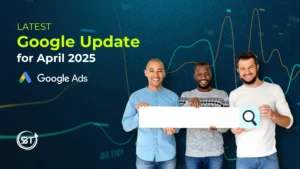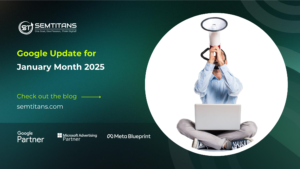
Social media has emerged as a revolutionary force, transforming all marketing channels. Over the past decade, it has given rise to various profitable platforms whose value has significantly increased. This shift has led to the development of various strategies for promoting businesses. Each social media platform operates as a business in its own right, focusing on understanding its audience, customers, and connectivity. One of the important social media platforms is Facebook which we will be focusing in this blog.
Facebook, founded in 2004, initially had limited access before opening up to everyone in 2006. Today, this social media platform is available globally, offering its services in over 112 languages. With 3.06 billion monthly active users worldwide, Facebook has undoubtedly achieved remarkable success.
But in this blog post, we will not talk about Facebook’s success story or how to give admin access but will focus on the platform’s metrics and how they assist businesses and marketers in tracking the performance of their Facebook pages, posts, and advertisements. These metrics give us important information that helps us make smart decisions and improve our strategies. Following are some key Facebook metrics:
Table of Contents
ToggleKey Facebook Metrics:
Page Likes and Follows
This is an important metric that helps businesses understand how many people have clicked, liked or followed your Facebook page over a period of time. It usually displays an overall audience size and where it came from, such as a website, mobile, ads, etc. It also helps in finding out the demographics of the audiences, such as location, age, gender, and interest.
Post Reach
Post Reach is another metric that shows the number of unique users who viewed your Facebook posts. This metrics includes organic reach for those who saw your posts for free in their newsfeed and paid for those who came across them through paid advertising. You can track reach based on the type of post, such as video, image, link, or text, to determine which content performs the best.
Engagement
Post engagements are important as this metric tracks interactions such as reactions, comments, and shares on your posts. Your engagement rate, i.e. engagements or reach, shows how engaging your content is in generating meaningful interactions and not just views. If you want to improve your content, analyze your top and lowest-performing posts based on engagement rates.
Video Views
Regarding video content, it’s important to keep track of key metrics like 3-second and 10-second video view counts, total minutes watched, average watch times, and audience retention curves. Video completion can give you a good idea of how engaging your video was from beginning to end. You can see where improvements can be made by identifying dropoff points where viewers stop watching. It’s also helpful to compare video performance across various lengths and topics.
Link Clicks
It is a metric that tracks the number of times people have clicked on the links in your Facebook posts or ads that lead to your website. This metric shows you how many people are actually visiting your website from Facebook. By analyzing which posts or ads get the most link clicks, you can see what content drives the most traffic to your website. It is always good to keep track of clicks, where they are coming from, and which landing pages are getting the most traffic.
Stories Metrics
It provides detailed performance data for Facebook stories posts that disappear after 24 hours. This data includes unique reach, engagement rates such as exits and replies, and length of stay, indicating how long viewers watched the stories and replays.
Audience Insights
This metric offers detailed demographic information, such as interests, online behaviors, and more, to help you better understand your fans compared to non-fans. This enables you to tailor your content and ads to reach your most valuable audience segments. With this metric, you can explore specifics like purchasing habits, device preferences, and other characteristics of your most loyal and engaged audiences.
Page Views
It is another metric that indicates how frequently users have visited various tabs on your Facebook page, such as your photos, videos, and other sections. By tracking this data, you can identify your most popular content and areas where you can increase user engagement.
Website Purchase Conversions
It is one of the metrics used to drive business results. It tracks transactions and conversion rates from Facebook ads using the Facebook pixel. With this metrics you can analyze purchase values, locations, and devices to optimize for the highest ROI purchase conversion rates.
Website Leads
This metric consists of lead form submissions, email signups, and other lead-generation activities extracted from Facebook content. Calculating the cost per lead from different sources can help determine the most cost-effective lead channel on Facebook.
Cost Per Result
This metric assesses your ad spending on average to achieve a specific goal such as clicks, sales, leads, or app installs. It tracks Cost per Click (CPC), Cost per Purchase, Cost per Lead, and Cost per Install and shows numbers that indicate your ad performance based on cost. Lower costs mean better ad performance.
Negative Feedback
This metric measures user actions such as hiding your posts, reporting content as spam, and unliking your Facebook page, indicating that they didn’t like your content. High rates of negative feedback can lead to decreased reach and visibility penalties from Facebook. Therefore, minimising negative feedback is crucial to sharing engaging, relevant content that caters to your audience’s interests.
Frequency
This metric keeps track of how many times someone views the same Facebook ad in a set period. It may happen that repeated exposure can enhance the ad message, yet excessive repetition can tire viewers and reduce ad effectiveness. It’s important to keep an eye on frequency to avoid overwhelming your audience with old, repeated ads. If the frequency gets too high, it’s a good strategy to switch up the ad creative or adjust your targeting audience.
Best-Performing Posts/Ads
This Facebook metric lets you see which of your regular posts or ads did the best. You can check out things like how many people saw it, how many likes, comments, and shares it got, and how many people clicked on any links or watched any videos. By looking closely at what made your top posts stand out, you can see the topic, the type of content e.g., video or photos, who it reached, and when it was posted.
Fan/Audience Overlap
This metric measures how many of your Facebook page’s followers fit into your target ad groups. A little overlap is normal because your fans probably like things connected to your brand. However, if there’s too much overlap, you’re simply hitting the same fans repeatedly without engaging new viewers.
When Fans Online or Best Time of Engagement
This metric gives you a detailed breakdown of when your Facebook fans are most active on the platform, hourly and daily. This information helps you figure out the best times to post and run ads to get the most engagement from your audience. You can boost visibility and interaction with your content by scheduling your posts and ads during these peak activity periods. Timing is everything, sharing posts or running ads when your fans are already online leads to better reach, engagement, and overall performance compared to when they’re not as active.
Image/Video Metrics by Location
This metric analyzes how your Facebook video success in different parts of the world regarding views, audience reach, watch times and engagement. This data helps you pinpoint the regions where your videos are most popular and engaging. Then, you can tweak your video plan, ideas, and adverts to focus on the places where most people watch.
Automated Ads Insights
This metric helps set up custom alerts for your Facebook ads. These are based on performance markers you choose, such as cost-per-result, click rates, or frequency limits. Once your campaigns meet these criteria, you will receive automatic notifications with helpful insights and optimization suggestions. Instead of checking each ad personally, these alerts show which ads need your attention based on your set goals. This way, you can efficiently improve the best ads or quick fixes for those not doing well. This saves you money and makes managing your Facebook ads more efficient.
Wrapping Up: Tracking and analyzing Facebook metrics becomes important as it keeps tabs on various factors influencing performance. These factors monitor the audience’s behaviour towards any post, preferences and interests, engagement rate, and other performance metrics.












